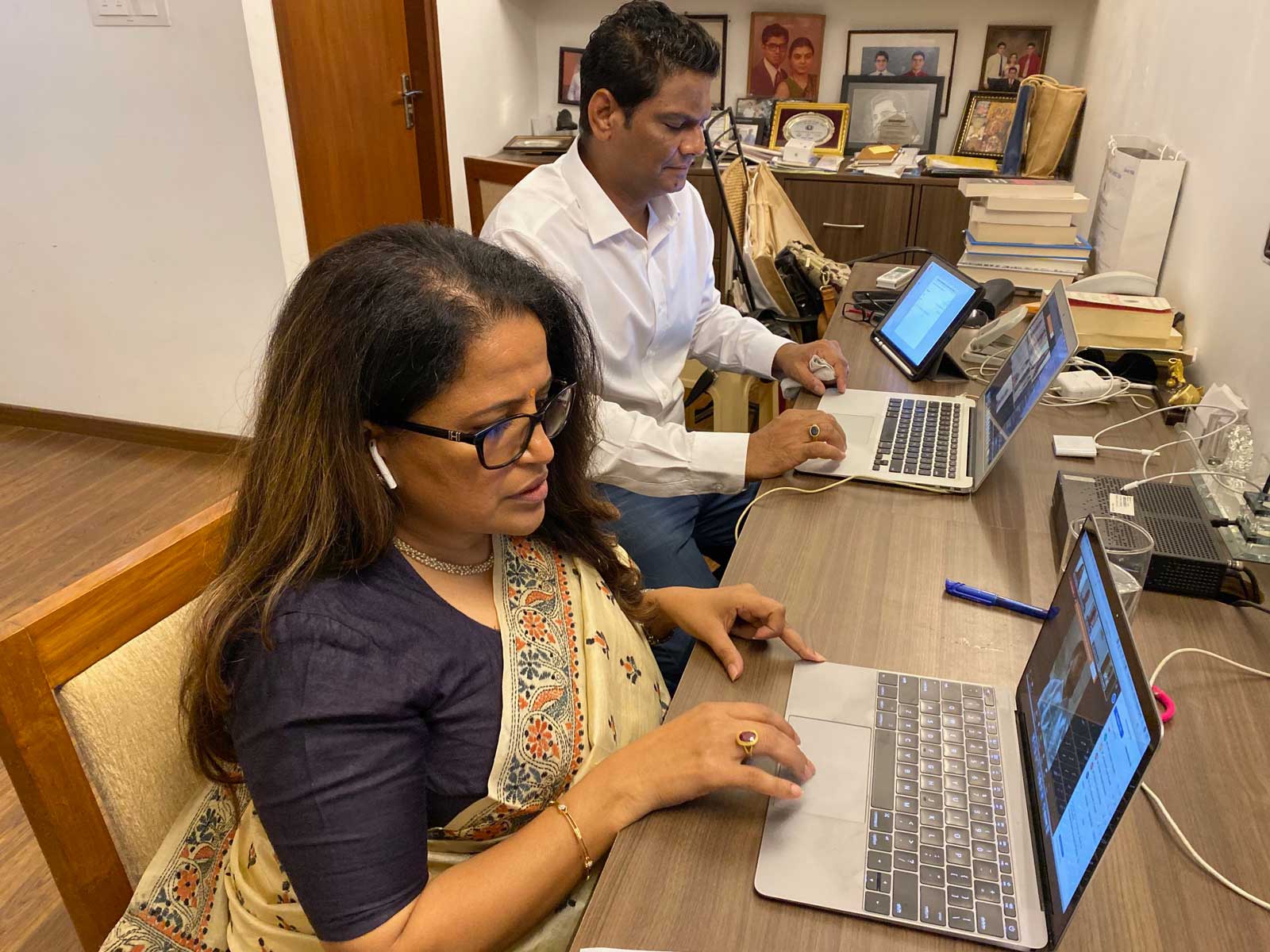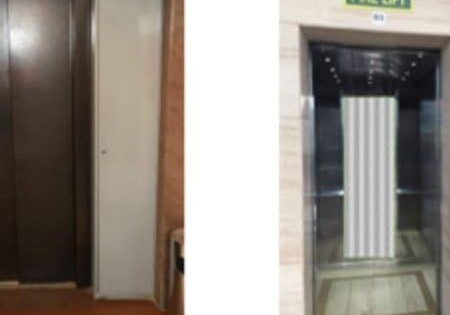Webinar for the Elevator & Escalator Industry, India
Jun 1, 2020

The all-important theme of “COVID-19 Impact — Challenges Faced by the Elevator Industry and the Way Forward” drew more than 1,000 attendees.
ELEVATOR WORLD India and Virgo Communications held the first in a planned series of webinars on aspects impacting the vertical-transportation (VT) industry on April 28. The theme, “COVID-19 Impact — Challenges Faced by the Elevator Industry and the Way Forward,” saw more than 1,000 people tuning in to an impressive panel of industry leaders who shared insights based on their experience and expertise.
With India witnessing an extended nationwide lockdown due to the COVID-19 crisis, the organizers extended support to the elevator industry by creating new, dedicated communication channels through webinars and relevant content. The panel comprised Sebi Joseph, president, Otis India; Amit Gossain, managing director, KONE India; Shakir Ahmed, deputy managing director, Fujitec India Pvt. Ltd.; Yohan K. John, director, Johnson Lifts Pvt. Ltd. and Syed Farhan Javed, vice president, Toshiba Johnson Elevators (India) Pvt Ltd.
With about 1,800 registrations and more than 1,000 attendees from 29 countries including Australia, Bahrain, Bangladesh, Belgium, Canada, China, Colombia, France, Germany, Greece, India, Israel, Italy, Japan, Malaysia, the Netherlands, Nigeria, the Philippines, Qatar, Saudi Arabia, Singapore, South Africa, Spain, Sri Lanka, Trinidad and Tobago, the U.A.E., the U.K. and the U.S., the pioneering initiative had a triumphant debut.
“It’s affected every industry: with this lockdown, things have effectively been closed for 10% of the year.”
— Yohan K. John, director, Johnson Lifts Pvt. Ltd.
Anitha Raghunath, publisher of EW India and director of Virgo Communications and Exhibitions Pvt. Ltd., hosted and co-moderated the webinar with Krishna Kumar “KK” Ravi, president and CEO, PVN Associates Private Ltd., an Indian elevator consultancy. Raghunath emphasized:
“The objective is to reach out to all stakeholders and encourage the industry to come together, discuss, debate and combine forces to identify the best, most feasible solutions to restore the growth of this sector. At the same time, we will also strive to keep up the morale of our people and move ahead with a positive mind.”
Extending a warm welcome, panel members and attendees from across the globe to the first-ever webinar dedicated exclusively to the elevator and escalator industry of India, Raghunath pointed out that the pandemic has transformed our world over the last few months. Going forward, it is envisaged that this will forever have a huge impact on the way we inhabit and interact with people and spaces. She continued:
“Businesses across sectors are coming to terms with this reality and rapidly adapting to the changing needs to even stay afloat amidst financial and operational challenges. The elevator industry is no different and has its own share of difficulties and uncertainties. Though the concept of social distancing is here to stay, it is difficult for this industry and its products to really observe the norms of social distancing to a large extent. And, some of the key challenges faced by this sector, such as inventory in hand, lack of manpower availability at construction sites post-lockdown, anticipated drop in maintenance revenues and uncertainty regarding uture business, need to be acknowledged and addressed at a macro level with the VT industry displaying a united front.”
Ravi got the proceedings started by posing the much-awaited question, “How has COVID-19 impacted the elevator industry in India?” Joseph said:
“We are in a very challenging time facing an unprecedented crisis. Construction sites are closed; our technicians are attending to emergency breakdown calls. Working from home has been a positive aspect. I found myself speaking to more people in the field and within the organization during the lockdown than before. There is a greater focus on the safety aspect. Maybe in coming days, the COVID-19 situation will hasten digitalization. With what the nation is trying to do in terms of following social-distancing norms while staying at home, it will enable togetherness.”
John concurred:
“It’s affected every industry: with this lockdown, things have effectively been closed for 10% of the year. The elevator industry has so many people working; there are high salaries to be paid, branch offices to be maintained, so [there are] high fixed costs. We are managing customer requests for breakdown situations. Safety has become a priority. We’ve been thrown a googly that none of us saw coming. Working from home does speed up the process, as one is available online.”
Commenting on the demands faced from customers, Gossain emphasized:
“Customers are priority. It is very important that they keep going. At KONE, we say our technicians are our superheroes. Elevators and escalators fall under the ‘emergency’ category, not ‘essentials.’ Due to the lockdown, it was necessary for us to get passes for them. Technicians are aware of safety aspects, ensuring safety of the customer and themselves. They have to ensure hospitals and high-rise buildings are taken care of. Customers understand that technicians also need passes. We have ensured personal protective equipment (PPE) [is] there, [and] passes are there [as we have been] working closely with [the] government.”
Describing the process of managing breakdowns during the crisis, Ahmed shared:
“We get daily reports from our trained teams. We talk to customers, and they also understand the situation. If it is an urgent need, our teams are also working for these customers. Hygiene norms are followed while handling the work; high-rise buildings are in dire requirement of lifts. Permissions [are] being sought from the government. We manage to get these things worked out. Service people have done a commendable job. We have avoided major repairs [and are] only [making] priority calls and call-backs.”
In a similar vein, Javed confirmed:
“Like everybody else, we also have an emergency response team in place. The suit that the service team is using — I would want to ask the industry leaders how we can dispose of these plastic suits. Everyone wants to go touchless where elevators are concerned; we are examining options. Basic sanitization is being done, as well. I also thank Joseph for getting elevators included in emergency services.”
“The next challenge is to keep migrant labor engaged. Sooner or later, they will come back, because they also need employment. The question is how we can give them comfort and confidence.”
— Sebi Joseph, president, Otis India
Gossain drew attention to the fact that:
“We had safety gear for construction sites but not for COVID-19. We trained our technical teams virtually. Initially, they were worried, but they realized that maintaining safety is important. They wore the PPE. If they are safe, then customers are safe. Virtual training sessions were conducted, [and] guidelines were sent to them and their families. We followed very stringent guidelines. Every day management gets a report on how they are doing. Due to the lockdown. Seventy percent of our staff [is] working from home. We explained everything to them, providing e-learning through the internet. Now, they have become used to it. Meetings have increased. They save time, as there is no need to come to the office; they are able to utilize time effectively at work and with their families. We ensured that they take care of customers, as [that] takes care of society.”
Regarding the support expected from the government and real estate bodies, Joseph said:
“VT has to be made an essential service. It is a state subject. We got some relaxation based on [the] ‘emergency services’ category. [The] government should support with. . . adjustments. The construction industry provides 8% of India’s gross domestic product (GDP) and provides substantial employment, as well, so I am confident that the government will provide some stimulus for developers.”
Gossain concurred:
“The government should make elevators and escalators essential services. There is an air of uncertainty; there may be a partial lockdown in certain areas. The government is doing a lot for financing of real estate; it needs to do the same for the elevator industry. Norms should be very clear for social distancing at construction sites, not just offices. [The] government can play a role in funding and financing developers. Ultimately, people want to buy homes, so it needs to ensure liquidity and funding to make that happen.”
Elaborating on the challenges faced with a work-from-home situation becoming the norm going forward and the possibility of reducing infrastructure, John said:
“In the commercial segment, there will be smaller requirements. At the same time, companies will be required to keep greater space distances between people. So, the space requirements could still be high per the rules that the government has come out with. Rents are going to be affected. Real estate is a huge percentage of the GDP of India. Even though [the] elevator [industry] is a small segment, it is part of that.”
Ahmed opined:
“The economic damage caused by COVID-19 is more than that caused by the 2008 crisis. None of the economic crises before this had such an impact. Everybody is coming up with their own ideas [about] how markets will pan out after the situation is [under] control. TATA Consultancy Services Ltd. has announced [that,] over the next five years, 75% of [its] employees will be working from home. Such statements are really going to bring down office demand. This is going to be the new normal; we need to get ready to accept more challenges ahead, like reduction in demand in office buildings. People may want to stay in independent houses, instead of apartments. A lot of changes can be expected. Though we had certain segments working from home earlier, now, there are ways we can use ‘work from home’ for the elevator industry, also. There is going to be a lot of change in demand. The question is how the government will support the real estate sector.”
Javed felt, “Space requirements for commercial spaces will be affected by social distancing and work from home; this will have to be managed by designing them differently.”
Responding to Raghunath’s question of whether India would have an advantage for becoming an alternative manufacturing hub, not just for domestic consumption, but also for exports, Joseph said that it is an opportunity for India to grow as a manufacturing hub. The “Make in India” concept will get initial thrust and momentum. According to John:
“It’s not a choice; you will have to adopt technology. Health is going to be given priority, which was not the case earlier. People will have to be forthcoming, not because it’s a luxury, but [because] it’s a utility — the need of the hour.”
— Syed Farhan Javed,vice president, Toshiba Johnson Elevators (India) Pvt Ltd.
“Right now, China is the manufacturing hub; everyone is trying to be self-sufficient, and India has the capacity for it. The supply chain is where India needs to make efforts; then, there will be scope. We will be pushing our suppliers to ‘Make in India’; we have been doing this even before the COVID-19 situation.”
Ahmed opined:
“With all this gloom around, it is a great opportunity for India. Many companies [could] be looking for strategic alternate bases and becoming self-sufficient at the same time. This definitely could bring in new business to India.”
Javed underlined:
“India has enough potential to become a worldwide manufacturing hub. I don’t see any reason why India should not. At the same time, we need the government to provide more incentives. This should be taken as an opportunity to accelerate the ‘Make in India’ plans. Those already manufacturing in India should try to increase it.”
Affirming that things are going to change as we go forward, Ravi asked about the proactive measures being envisaged. Joseph responded:
“There will be a ripple, but I am optimistic. Construction will be supported by the government by stimulus; hygiene and social distancing are dominant [for customers] who want hands-free operation. How do we reduce physical contact in an elevator? It’s the most crowded place! How do we manage the social distancing challenge? We may have to effectively come [up] with solutions. Digitization is going to be the way forward. These are the things that will happen and [what] elevator companies will be doing for customers.”
Commenting on a possible shift in elevator capacities, John said:
“I have three developers asking if they should have separate lobbies to reduce crowds; my answer was to increase the number of lifts. Work with us on the design front. There is a new lift etiquette; people will find ways to avoid touching. There shouldn’t be crowding. Entry times of people can be spread across. People are brainstorming. Over the long term, different things are going to evolve.”
Javed pointed out:
“The repercussions of social distancing in elevators will be extra waiting time. Every builder is going to be trying to save an extra buck; will they want to add elevators? Then, their maintenance also comes into the picture.”
Ahmed brought up the problems of migrant labor during the lockdown:
“Once the lockdown [eases], these people [will] rush back to their families and spend time with them. Lockdown [will] have caused a lot of psychological issues. Workforce is definitely going to be affected. It’s going to be a major challenge for all of us. Post COVID-19, there are a lot of guidelines for opening industries. We need to think of ‘work from home.’ Those who can manage this change fast will grow faster.”
Joseph concurred:
“There are many challenges, and finding solutions is not easy. We are doing continuous interaction with customers, working in construction sites. We have been constantly engaging with Otis technicians. We started an employee welfare program, providing psychological guidance. The next challenge is to keep migrant labor engaged. Sooner or later, they will come back, because they also need employment. The question is how we can give them comfort and confidence.”
John shared:
“As far as our factories are concerned, we found most of the labor is within the same area. Subcontractors may face problems as the labor returns home at this time of the year. We won’t have problems at the manufacturing level, maybe for positions like truck drivers and so on. We are waiting to see what happens, to see how we are going to handle this.”
On strategies for handling sites and communication with the workforce, Javed explained:
“What we are trying to do is have as minimum travel as possible for our people. If someone is close to Bangalore but [had been] working from Mumbai, now we make him work at Bangalore. Manpower is going to be a challenge. We are still assessing the degree of damage this virus has caused. We keep learning and identifying; it’s a process.”
Ravi then asked that, while technology is going to play a major role, will it be adopted by clients? Javed said:
“t’s not a choice; you will have to adopt technology. Health is going to be given priority, which was not the case earlier. People will have to be forthcoming, not because it’s a luxury, but [because] it’s a utility — the need of the hour.”
Ahmed opined:
“We have got to find ways to live; there is lots of panic. Definitely, customers will follow strict norms and guidelines. Meanwhile, the real estate industry should evolve. In elevators, a person is hardly provided or allocated 1 ft2. We need specialized systems and mechanisms. With respect to working from home and social distancing, people will start preparing for it. We need to add these guidelines in the company handbooks. Technology will definitely be used.”
Given that the elevator industry is slow to adopt new technology, what is likely to happen in this scenario? Responding to this question, Joseph emphasized:
“We will be forced to. This will accelerate the momentum. Technology will play a pivotal role. We will all adapt. It will be a challenge, but we will adapt. We may have to come up with smart innovations. We will evolve. This time, perhaps we will hasten it.”
John shared:
“As far as dealing with customers and within an organization, we are meeting more often. Customers like real estate developers will be able to shift to digitization. A lot of handholding will be required for those who want just one elevator for their house. The product is more or less standardized.”
On being asked when the industry is going to bounce back, Ahmed said:
“My personal opinion is that India has its own demand, so it will kick in far sooner than other global economies. Maybe next year by the first or second quarter. It could happen sooner than that, also. Certain things have to change and to normalize. If a vaccine comes up by [the beginning of] next year, we should be running.”
Joseph shared, “My optimism comes from the construction industry as a sector. The government will do something to provide a stimulus. It needs to invest in infrastructure, so the show will go on.”
Javed opined:
“The vaccine is the key. Once the cure is in place, people will move. If India is the first to develop a vaccine, it will be a huge economic boom. We will be able to export it, also; [it] will change the game. For everyone to come back to normal with social distancing [and] sanitization, it will take at least a year. We have to be positive; Indians are born crisis managers; we will bounce back strongly.”
John concurred:
“The vaccine is when normalcy will resume. People will continue to follow social distancing. You can’t keep waiting for a magical cure. People need to go back to work; in three months, there’s going to be a new normal.”
Joseph emphasized that “this too shall pass. We should calm ourselves, instead of calming the storm.”
The webinar concluded with Raghunath announcing that more such sessions have been envisaged on themes including maintenance, sales and marketing based on industry feedback. “We should come back again with better solutions,” she emphasized, signing off.
Get more of Elevator World. Sign up for our free e-newsletter.







